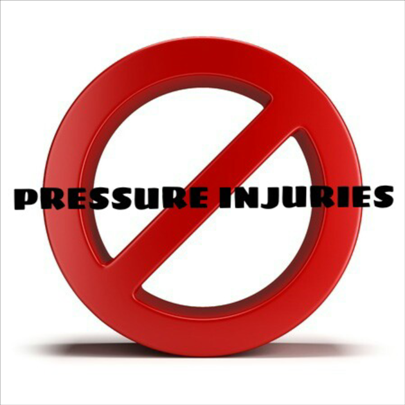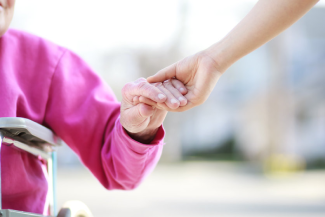Pressure Injury Prevention: Here is How You Can Make a Difference
September 28, 2017
I consider myself to be beyond blessed. I know that my purpose in life is to be useful, compassionate, and to make a difference in wound care… In any capacity I can. I have no problem sharing my mother's story with my patients. I think it shows that I am genuine and compassionate. I do whatever works to help my patients understand the importance of pressure injury prevention and/or treatment. My point is: do whatever works. It is good to think outside of the box! Pressure injuries affect millions of people worldwide, and are a big financial burden to both the patient and the health care facility.
The suffering and lives lost are unimaginable. I lost my mother at 47 years old, due to sepsis of hospital-acquired pressure injuries. It was traumatic for me to see my mother suffer this way—that's when I knew I must do what I can to help others prevent pressure injuries. As health care providers, it is our responsibility. We must focus more on prevention and early detection of pressure injuries—reacting to discolored skin (keeping in mind all skin tones and that the presentation will be a bit different). The bottom line is that most pressure injuries are preventable. The cost of preventing a pressure injury is much less than the cost of treatment. I do not care if you work in a nursing home, hospital, clinic, home health, or as an at home caregiver, you MUST make prevention a priority.
Building Awareness: #StopPressureInjuries2017
The National Pressure Ulcer Advisory Panel (NPUAP) announced that World Wide Pressure Injury Prevention Day is to be celebrated on November 16, 2017. I encourage you to take this opportunity to not only educate your staff while bolstering quality of care, but to also think of ways to reach out to the community. I've been called "Wound-er Woman" because I live and breathe wound care. It is my calling. It is my passion, no doubt about it. My goal is to move and shake this world in pressure injury prevention, but I am asking YOU TO HELP ME. I want you to flood social media with all of your creative education! I want you to use the hashtag #StopPressureInjuries2017. I will be looking for all of your hashtags! I like to make education fun. It keeps the audience engaged. I have conducted skill carnivals for long-term care facilities, and found it to be very effective. If you are interested in any creative ideas, you can refer to a previous WoundSource blog of mine on pressure injury staff education. The National Pressure Ulcer Advisory Panel (NPUAP) has developed many handouts and media materials that can be utilized in all health care settings. You can download any or all materials by clicking here.
About the Author
Cheryl Carver is an independent wound educator and consultant. Carver's experience includes over a decade of hospital wound care and hyperbaric medicine. Carver single-handedly developed a comprehensive educational training manual for onboarding physicians and is the star of disease-specific educational video sessions accessible to employee providers and colleagues. Carver educates onboarding providers, in addition to bedside nurses in the numerous nursing homes across the country. Carver serves as a wound care certification committee member for the National Alliance of Wound Care and Ostomy, and is a board member of the Undersea Hyperbaric Medical Society Mid-West Chapter. She is the first LPN to be inducted as an Association for the Advancement of Wound Care (AAWC) speaker.
The views and opinions expressed in this blog are solely those of the author, and do not represent the views of WoundSource, HMP Global, its affiliates, or subsidiary companies.












Follow WoundSource
Tweets by WoundSource